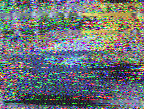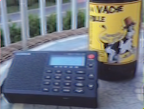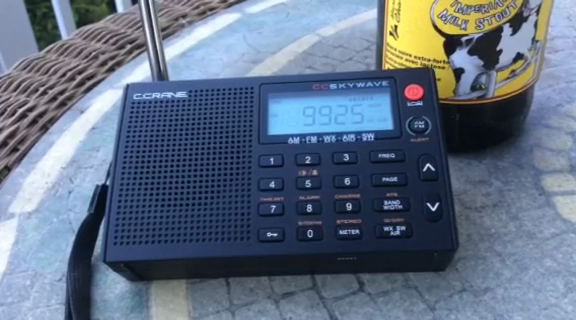www.rhci-online.net/radiogram/radiogram.htm
██╗██████╗ ██████╗ ██████╗ █████╗ ██████╗ ██╗ ██████╗ ██████╗ ██████╗ █████╗ ███╗ ███╗
██║██╔══██╗██╔════╝ ██╔══██╗██╔══██╗██╔══██╗██║██╔═══██╗██╔════╝ ██╔══██╗██╔══██╗████╗ ████║
██║██████╔╝██║ ██████╔╝███████║██║ ██║██║██║ ██║██║ ███╗██████╔╝███████║██╔████╔██║
██║██╔══██╗██║ ██╔══██╗██╔══██║██║ ██║██║██║ ██║██║ ██║██╔══██╗██╔══██║██║╚██╔╝██║
██║██████╔╝╚██████╗ ██║ ██║██║ ██║██████╔╝██║╚██████╔╝╚██████╔╝██║ ██║██║ ██║██║ ╚═╝ ██║
╚═╝╚═════╝ ╚═════╝ ╚═╝ ╚═╝╚═╝ ╚═╝╚═════╝ ╚═╝ ╚═════╝ ╚═════╝ ╚═╝ ╚═╝╚═╝ ╚═╝╚═╝ ╚═╝
RSID: <<2016-07-
13T20:30Z
MFSK-32
@
6070000+1500>>
START
QUESTA E' IBC, ITALIAN BROADCASTING CORPORATION
TRASMISSIONI IN ITALIANO
MERCOLEDI' 20-22 UTC 6070 KHZ
VENERDI' 01-01.30 UTC 9955 KHZ
SABATO 01.30-02 UTC 11580 KHZ
website: HTTP://WWW.IBCRADIO.WEBS.COM
email: IBC@EUROPE.COM
"IBC DIGITAL" "IBC DIGITAL" "IBC DIGITAL"
MERCOLEDI' 20.30-21.00 UTC 6070 KHZ
-"RADIOPASSIONI" A CURA DI ANDREA LAWENDEL, IN MFSK 32 (1500 Hz)
-"DX NEWS DX ITALIA", NOTIZIE PER RADIOMATORI TRATTE DAL BOLLETTINO DI I2MQP, IN
OLIVIA 16-500 (2200 Hz)
BUONA DECODIFICA!
"RADIOPASSIONI" "RADIOPASSIONI"
(http://www.radiopassioni.it/)
Qui radio plasma. L'SDR low cost negli esperimenti sull'anti-materia del CERN
Grande lezione di fisica ieri dal mio amico Ruggero Caravita, giovane scienziato
attivo tra INFN di Genova e CERN di Ginevra, dove collabora nel team
dell'esperimento AEgIS (https://aegis.web.cern.ch/aegis/research.html),
che studia gli aspetti gravitazionali dell'antimateria per verificare il
principio di
equivalenza debole della massa. Ruggero non solo tollera la mia profonda
ignoranza di una materia che lui padroneggia invece in modo sopraffino, ma
conoscendo la mia strana passione per la radio e la propagazione si lascia
coinvolgere in lunghe conversazioni sulla software defined radio e i meccanismi
della propagazione delle onde elettromagnetiche nei plasmi, uno stato della
materia (e dell'anti-materia) molto importante per gli esperimenti di AEgIS.
In genere in ambito radioamatoriale si conoscono fin troppo bene le applicazioni
dell'SDR nel monitoraggio di ogni tipo di trasmissione di orgine umana o
M2M, o il grande apporto che la tecnologia software-defined sta dando alla
radioastronomia. Molto meno scontato è il ruolo che anche dispositivi molto
economici possono avere in un laboratorio delle alte energie per lo studio "non
invasivo" (un aspetto fondamentale quando si ha a che fare con particelle
quantistiche, anche nei loro comportamenti classici come nel caso che andremo a
trattare). Ruggero mi ha raccontato di aver utilizzato un dongle SDR che si è
procurato con un investimento di un centinaio di euro per osservare il
comportamento di un plasma di elettroni (ma se capisco bene potrebbe trattarsi
indifferentemente di anti-elettroni) intrappolato in uno spazio di confinamento
elettromagnetico. L'uso di tecniche DSP in istituzioni di questo genere non è
certo una novità. Ancora una volta a stupire sono la capacità dimostrata da
hardware di classe assolutamente commerciale e la flessibilità di applicazioni
software sviluppate in ambito amatoriale.
In attesa della pubblicazione di un articolo più dettagliato e scientificamente
autorevole da parte dell'ideatore dell'esperimento, provo a raccontare come
l'ho capita io. Immaginiamo un cilindro in cui una serie di toroidi genera un
campo magnetico parallelo alla lunghezza del cilindro stesso. Sulle pareti del
cilindro una serie di elettrodi generano invece un campo elettrico. In questo
caso immaginiamo due elettrodi carichi uno all'imboccatura, l'altro sulla parte
terminale del cilindro. Sparando all'interno di questo contenitore magnetico,
che tecnicamente si chiama Penning trap (qui la spiegazione fornita da un altro
esperimento del CERN, Alpha -
http://alpha.web.cern.ch/penningtrap
) gli elettroni da intrappolare, questi cominciano ad avvitarsi a cavatappo
lungo le linee
di flusso del campo magnetico percorrendo la lunghezza del cilindro fino a
percepire, sul fondo, il campo elettrico che respinge gli elettroni. Le
particelle
invertono senso di marcia e ripercorrono, sempre attorcigliandosi sulle linee di
flusso magnetico, sempre confinate all'interno degli anelli della Penning
trap. Tornati vicino all'imboccatura trovano il secondo campo elettrico e il
loro cammino spiraleggiante ricomincia e così via.
In questo modo un numero N di particelle si ritroverà intrappolato all'interno
di questo "contenitore", creando per effetto del campo magnetico un vero e
proprio plasma: un gas di elettroni che assume a sua volte la forma di un pezzo
di tubo di gomma. Il moto delle particelle determina una serie di "modi" di
risonanza dovuti al fatto che questo cilindro di gas subisce delle deformazioni,
per esempio allungandosi e accorciandosi rispetto al suo baricentro, o
subendo delle torsioni relativamente al proprio asse o ancora traslando verso
destra o sinistra seguendo le oscillazioni del suo stesso baricentro. L'aspetto
interessante è che il passaggio degli elettroni davanti agli elettrodi disposti
assialmente lungo la parete della trappola può essere rilevato misurando il
minuscolo campo generato dalle particelle in movimento, semplicemente
sintonizzandosi sulla frequenza giusta. Nel caso del plasma di Ruggero questa
frequenza
è centrata intorno ai 25 MHz.
C'è però un altro parametro misurabile, questa volta legato alla temperatura:
per effetto del moto delle particelle, infatti, il "tubicino" di plasma subisce
un certo gradiente termico (si parla di un calore davvero mimino, di una decina
di gradi Kelvin). Nell'equazione che determina la frequenza di risonanza dei
modi, questa è proporzionale alla temperatura T e inversamente proporzionale al
numero di particelle che compongono il plasma. La temperatura, infatti,
modifica la densità del plasma e quindi la frequenza dei suoi modi di
oscillazione.
Ruggero mi ha fatto capire di aver predisposto l'esperimento con molta curiosità
ma mi è sembrato che fosse rimasto quasi sorpreso di un successo ottenuto al
primo colpo. Guardate le due videate ottenute da Ruggero con SDR# - una delle
interfacce SDR più popolari e oggi alla base di un nuovo front end hardware
progettato dal suo autore Youssef Touil, il "dongle" AirSpy (con copertura tra i
24 MHz e gli 1,8 GHz) con il recente optional del downconverter SpyVerter
che estende la copertura tra 1 kHz e 60 MHz (http://airspy.com/).
Accanto alla videata di riferimento, il "fondo" ottenuto misurando il potenziale
sugli
elettrodi della trappola dell'esperimento AEgIS priva di plasma di elettroni al
suo interno...
IMG BACKGROUND
Sending Pic:320x180Cp4;
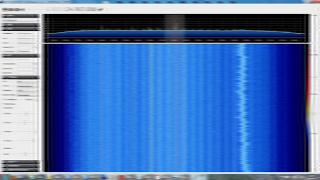
«si vede benissimo -
spiega Ruggero - la variazione nel tempo in frequenza del modo, che corrisponde
alla variazione di densità del plasma dovuta alla
temperatura che va in equilibrio»:
IMG
Sending Pic:320x180Cp4;
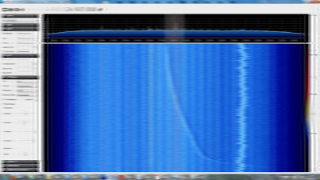
Sembra quasi uno
ionogramma, ma nel nostro caso la lettura è non invasiva, non prevede per
esempio l'uso di una ionosonda. E le scoperte non finiranno qui.
I prossimi passi di Ruggero consisteranno nell'effettuare altre visualizzazioni
SDR modali, su frequenze decisamente più basse dei 26 MHz, alla ricerca per
esempio degli effetti della radiazione di sincrotrone degli elettroni che si
avvitano nella loro corsa, cedendo a ogni giro una briciola della loro energia.
END
"RADIOPASSIONI" "RADIOPASSIONI"
"RADIOPASSIONI"
( http://www.radiopassioni.it/
)
"IBC DIGITAL" "IBC DIGITAL"
SWITCH NOW TO OLIVIA 16-500(2200 Hz)
RSID: <<2016-07-13T20:45Z
OL 16-500 @ 6070000+2200>>
START START
"IBC DIGITAL" "IBC DIGITAL"
"DX NEWS DX ITALIA" "DX NEWS DX ITALIA"
STAZIONI IN ARIA ORA O ENTRO UNA SETTIMANA
3A Monaco Jul 1 - Jul 15 IZ8EGM as /3A qsl H.C.
3B8 Mauritius Jun 15 - Jul 14 M0RCX as /3B8 qsl EB7DX
5W Samoa Jun 15 - Jul 15 KC0W as 5W0COW qsl H.C. dir only
5W Samoa NOW HB9EXA as 5W0RX qsl H.C.
8P Barbados Jul 11 - Jul 16 W6NN as 8P6NN and KE1B as 8P6MM qsl KE1B
8T Antartica Now - Dec 2016 VU3BPZ as BT2BH qsl I1HYW
BY China JUl 30 - Jul 31 BY4JN from AS-150 qsl BG4OGO dir LoTW
CE Chile Jul 30 - Jul 31 XR1T from SA-069 qsl CE3OP
CP Bolivia Jul 1 - Aug 3 EA5RM as CP1XRM qsl H.C. LoTW
EA8 Canary Islands Jul 11 - Jul 25 IW2NEF as /EA8 qsl IK2DUW
EA9 Ceuta & Melilla Jul 16 - Jul 17 EC7DZZ & EA7FKH as EG9LH qsl EC7DZZ
HB0 Liechtenstein Jul 8 - Jul 14 as HB0/RC3C qsl RC3C
J6 St. Lucia Jun 22 - Jul 24 NY3B as /J6 qsl LoTW
JT Mongolia Jul 11 - Jul 19 RZ3FW & R4WAA as JT5FW qsl RZ3FW & OQRS
JX Jan Mayen Apr 12 - Oct 4 LA9JKA as JX9JKA qsl H.C. dir
OX Greenland Jul 9 - Jul 15 OZ1DJJ from NA-018 as OX3LX
PY Brazil Jul 12 - Jul 17 ZY8M from SA-045 qsl PT7BI
RI1 Antartica Apr 2016 to Apr 2017 RW1AI as RI1AND from AN-016 qsl RW1AI
SV8 Greece Now - Jul 24 DK3SJ as /SV8 qsl H.C. bur
UA Russia Jun 3 - Sep 3 RI1C from EU-133 qsl RW1F OQRS
V3 Belize Now - Oct end PA0C as V31HV & V31HV/p qsl H.C. dir
W USA Jul 3 - Jul 18 WX4SKY from NA-213 qsl H.C. dir & bur & LoTW
YJ Vanatu Jul 8 - Jul 14 ZL3GA as YJ0GA qsl H.C. LoTW
END END
"DX NEWS DX ITALIA" "DX NEWS DX ITALIA"
"IBC DIGITAL" "IBC DIGITAL"
END END END
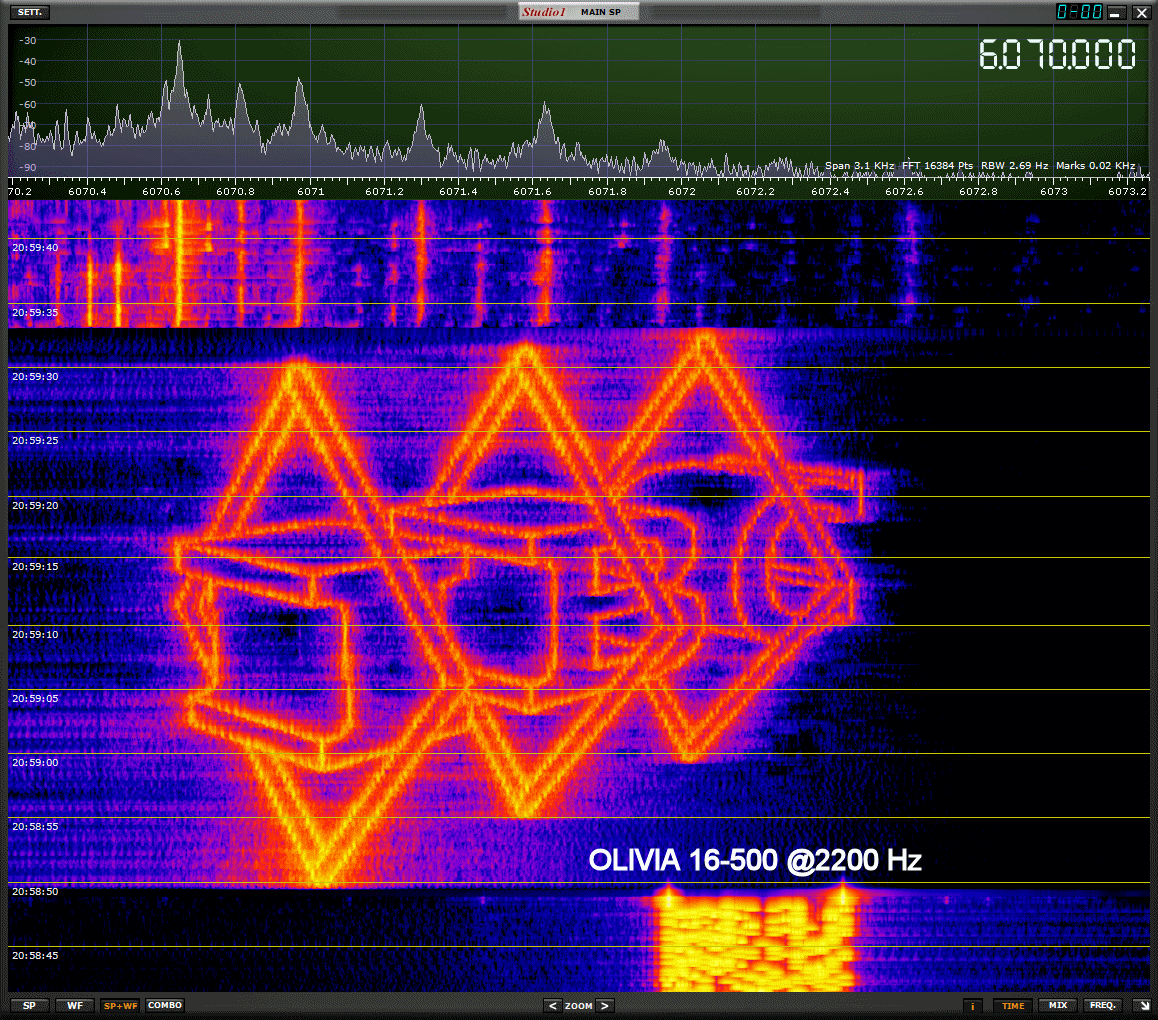
██████╗ ██╗ ██████╗ ██╗ ██████╗ ██╗ ██╗
██╔══██╗██║██╔════╝ ██║ ██╔══██╗╚██╗██╔╝
██║ ██║██║██║ ███╗██║ ██║ ██║ ╚███╔╝
██║ ██║██║██║ ██║██║ ██║ ██║ ██╔██╗
██████╔╝██║╚██████╔╝██║ ██████╔╝██╔╝ ██╗
╚═════╝ ╚═╝ ╚═════╝ ╚═╝ ╚═════╝ ╚═╝ ╚═╝
RSID: <<2016-07-
11T20:00Z
MFSK-32 @
6070000+1500>>
Hello and welcome to DigiDX 20, a weekly review of the latest shortwave
and DX news broadcast mainly in MFSK32 mode. This broadcast includes
shortwave news, an article comparing the C. Crane CCRadio 2E and the
Panasonic rf-2200 plus the over-the-air QSL card this time broadcast in
HTML with an experimental SVG image in MFSK64 mode.
DigiDX weekly schedule:
Sunday 2130 - 15770kHz via WRMI (Okeechobee, FL, USA)
Sunday 2330 - 11580kHz via WRMI (Okeechobee, FL, USA)
Monday 2000 - 6070kHz via Channel 292 (Rohrbach Wall, DE)
Daily 0530/1830 - 6070kHz via Channel 292 (Rohrbach Wall, DE)
Thanks to Channel 292 broadcasting the extra daily repeats of DigiDX, to
buy shortwave time from Channel 292 at very reasonable prices go to
http://www.channel292.de.
Any other extra broadcasts will be listed on http://www.digidx.uk
If you enjoy DigiDX and find the service useful please consider donating
via Paypal to reports@digidx.uk
or via our Patreon page. Any money
donated will go towards paying for airtime to keep DigiDX on the air to
Europe and North America.
Every donation will help no matter how little
-https://www.patreon.com/digidx.
/ reports@digidx.uk
Thanks very much to listeners Oscar Marazzini, Alan Gale, Jordan
Heyburn, Fred Albertson, Mike Stapp, Mark Braunstein and Richard Langley
for contributing via Paypal or to the Patreon campaign.
Latest Shortwave News:
Radio Sakha changes
WRNO back on the air
Radio Sakha changes
Recent monitoring of Russian shortwave station Radio Sakha has indicated
that it is likely that transmitter assignments between the 7295kHz and
7345kHz frequencies have been swapped round.
7295kHz is now heard much stronger at a reported 250kW while 7345kHz is
now much weaker (possibly 100kW). This could be related to CNR1
broadcasts which also use 7345kHz.
WRNO back on the air
After several months off air Louisiana based station WRNO has been again
heard on shortwave on 7505kHz. This is after help from broadcast
engineer Jon Gorski who has also recently bought station KJES in Vado,
New Mexico which he intends to bring back on the air . Plans are
in-place to renew the license and move the transmitters and antennas to
a new site. A temporary transmitter site will be constructed to serve
while the main site is re-constructed. Upgrades are also planned for the
transmitters and antennas.
We now have an article from Tim Rahto from
http://hfradioreview.com/
called "An Evening With a Couple of Broadcast
Band Heavyweights".
Over the past couple of weeks, my humble patio has also become my radio
room, giving me a chance to spend my evenings outside under the stars
with a portable radio or two. I’ve really enjoyed these sessions, but
last night was memorable in that I brought along two of the most highly
regarded portables out there: the C. Crane CCRadio 2E and the venerable
Panasonic rf-2200. Jay Allen rates both of these radios as the upper end
of the five star scale, while Gerry Thomas over at Radio Plus
Electronics lists them both in the top three of the best portables for
MW DX.
With that in mind, I decided to take them out and see how they compared
during a night of listening. Now please remember that this isn’t a
true head to head review, but more like a few observations from a single
night of listening. A head to head review would take a lot longer, and
probably wouldn’t be all that revealing in the end anyway. Think of
this as more of a friendly jam session between to equally competent
musicians. They’re both very good at what they do, but they both do it
with their own sense of style.
The CCRadio 2E
Crane’s CCRadio 2E reminds me a lot of the old Realistic DX-390, and
for good reason. Like that old Radio Shack offering from the early 90s,
the CCRadio is made by Sangean, which might explain the similar feel
these radios share. The size, control placement, and sound are all
similar to the old DX-390. Unfortunately, the CCRadio 2E (aka CCR2E)
also tunes like that old radio, with the same muted audio and
“chugging” sound whenever you change frequencies. I would think they
could’ve done something about this over the last twenty plus years,
but I would be wrong.
Aside from this quirk though, the radio is laid out in an easy to use
arrangement, with the tuning knob and volume control on the side, and
the presets, power, and band selection on top. The front panel features
a separate bass and treble control, up and down tuning buttons (10 kHz
at a time on AM), and a variety of clock and alarm controls I will
probably never use. Unlike most of my other portables, the CCR2E
features a digital frequency display, with an optional backlight. While
it isn’t a requirement, a digital readout can certainly make your life
a lot easier. Last night, for example, I turned the CCrane to 610 to
compare it to what I was hearing on the old Panasonic only to find I was
really listening to 590 kHz. Oops!
While I realize that the audio of this radio was designed for human
speech and not music, it still sounds kind of narrow and compressed to
my ears. Even with the separate bass and treble controls, it still
doesn’t seem to have the full sound one would expect from a radio of
this size (another trait it shares with its DX-390 ancestor). It does
work as advertised though, with speech being clear and quite
understandable from even distant stations.
And it is in hunting out distant radio stations where this radio shines.
I could hear everything on the CCrane that I could hear on the Panasonic
and vice versa. In fact, in sheer sensitivity, I couldn’t really tell
them apart. The CCrane also impressed me with its selectivity as well,
passing my “1030 test” with flying colors. It was a little harder to
get a good null on WHO with the CCR2E than it was the rf-2200 and its
rotating antenna, but it is still doable.
A rotating cake decorating plate from WalMart or Amazon will make
finding nulls a lot easier, but a real signal strength meter would be
even better. When you’re trying to find that perfect sweet spot that
will give you the maximum null, a real signal meter is a huge help. The
uncalibrated signal meter along the right side of the CCrane display is
too slow to respond to be of any use with this. Its probably more a
factor of the radio’s automatic gain control than it is the meter, but
there’s no user controlled AGC setting. What you have is what you
have.
Unlike the Panasonic, the CCrane allows you to use a tuned loop, like a
Select-a-Tenna or Q-Stick, to further enhance your listening. I took
advantage of this to couple my Quantum Loop antenna to the radio using
nothing but magnetic coupling. I had to ride the gain control pretty
hard on the antenna to keep the radio’s AGC from overloading, but it
made a big difference in what I could hear. I found i could get deeper
nulls much easier with the loop than I could with the radio alone, which
shouldn’t be a surprise.
The rf-2200
You don’t have to sit in front of this radio for long before you can
see why its still the gold standard in broadcast band portables. Even
after 40 years, this radio is still a very hot performer.
As you may know, I have spent a lot of time this summer listening in
with the Sony EX5 MkII, which is a very nice portable in its own right.
When I tune that radio to 1030 AM, engage in some careful nulling of
nearby WHO on 1040 and activate the lower sideband synch detector, I can
squeeze out some signal, but not without some adjacent channel splatter.
When I performed this test on the rf-2200, I made WHO radio disappear
entirely, and found WBZ Boston in the clear. While I could tell it was
Dan Rey’s Nightside show with the Sony, the Panasonic let me listen to
the show, and follow the discussion about whether or not callers would
attend the Olympics in Brazil. That’s very impressive to say the
least.
A lot of that impressive performance comes from the rotating antenna
mounted on top of the radio. The ball bearing action gives you smooth,
precise control of the nulls without having to rotate the actual radio.
That means your eyes never have to leave the signal meter, and lets you
get the deepest null possible.
Unfortunately, that rotating antenna is also part of the reason why I
cannot use Q-Stick or Select-a-Tenna with this radio. According to Gerry
Thomas, there’s something in the circuitry of this radio and other
Panasonics that won’t allow you to magnetically couple. Both it and
the CCrane do have external antenna terminals though, so can still
connect directly to the Quantum Loop or any other antenna.
Unlike the CCrane, the rf-2200 has a big, full audio that’s common to
a lot of radios in the Panasonic line. Even with the narrow bandwidth
selected, the audio still has a nice, rich sound to it. I don’t feel
as though that richness gets in the way of intelligibility either. In
spite of the rf-2200 not having audio tailored to human speech like the
CCR2E, I found each radio to have equally intelligible audio.
Unlike the CCrane, with its different controls spread out across the
front, side, and top of the radio, all of the Panasonic’s controls are
on the front. In other words, you’re going to need a flashlight to
make your way around all of those controls in the dark, especially if
you decide to switch over to shortwave. I’m sure in time you’ll
figure it out in time, but a flashlight will make things a lot easier.
The good news is that the radio has a dial light, something that’s
painfully missing from the Sony EX5. Unfortunately its nestled in
between two identical switches that control the BFO and the power. If
you’re in the dark, and your radio begins to squeal or goes silent
when you’re reaching for the dial light, you hit the wrong switch.
As I mentioned earlier, the rf-2200 does have shortwave capabilities,
and it seems to be a fairly decent performer. I checked for New Zealand,
Australia, and Brazil a couple of times this last week and found them
all. I even listened to the pirate station X-FM the other night as well.
No SDR, SAL loop, or DSP needed either. Just me, the rf-2200, and a
couple of tiki torches. Life is good, people. Life is good!
So Which One is Better?
I will be the first to admit that I have a crush on the Panasonic
rf-2200. It’s not small or light, but it hears things that other
portables don’t. Not only does it hear them, it hears them well. Its a
big beast of a radio that is sensitive, selective, and capable of deep,
precise nulls with its rotatable antenna. Simply put, the rf-2200 kicks
the doors off of just about every other portable I’ve ever had the
pleasure of using.
But it doesn’t kick the doors off of the CCR2E.
In fact, I couldn’t find any real difference in their ability to hear
things at all. I certainly like the audio on the Panasonic better than I
do the CCrane, and the rotatable antenna on the rf-2200 is fantastic,
but I can use the Q-Stick or other magnetically coupled antennas with
the CCrane too. It also has the advantage of a digital readout, so I
don’t have to guess where I am on the dial.
I really wanted this “showdown” to be a slam dunk for the Panasonic,
but it is not. If the Panasonic could hear a station, the CCrane could
hear it too. In fact, no matter what I threw at both of these radios,
their performance was virtually neck and neck. It’s even a wash when
you look to other features each radio has. The Panasonic is a decent
performer (for a portable) on shortwave, but the CCrane can pick up the
2M band and the NOAA weather radio frequencies. It can can even alert
you to when there’s a storm warning issued. It also has a built in
clock with alarm. Not a feature I’d use, but it is there nonetheless.
In the end, I’ll probably stick to the Panasonic, but I won’t be
putting the CCrane up for sale anytime soon either. Both are outstanding
radios, and well worth having in your collection.
See the review including audio samples at
http://hfradioreview.com/index.php/2016/07/06/an-evening-with-a-couple-of-broadcast-band-heavyweights/
RSID: <<2016-07-11T20:18Z
MFSK-64 @
6070000+1500>>
Copy the text below from <html> to </html> (including the <html> and </html>)
and paste it to a text editor, e.g. Notepad. Save it as an .htm or .html file.
Open
the file in a web browser. Or click on the file in Windows Explorer or
equivalent,
and the file should open in your default browser.
<html><style>
body *{
font-family: Arial, sans-serif;
}
h1 {
background-color: red;
color: #ffffb3;
font-size: 128pt;
font-style: italic;
font-weight: bold;
margin-top: 0px;
margin-bottom: 0px;
}
h2 {
color: blue;
font-size: 32pt;
font-weight: bold;
margin-top: 0px;
margin-bottom: 0px;
}
h3 {
color: DarkBlue;
font-size: 16pt;
font-weight: bold;
margin-top: 0px;
margin-bottom: 0px;
margin-right: 0px;
}
p {
font-size: 18pt;
}
</style>
<body>
<table style="width:50%;background-color:#e5e5e5;"><tr><td style="text-align:center;">
<img src="data:image/svg+xml,%3Csvg%20version%3D%221.0%22%20xmlns%3D%22http%3A%2F%2Fwww.w3.org%2F2000%2Fsvg%22%0A%20width%3D%22362.000000pt%22%20height%3D%2265.000000
pt%22%20viewBox%3D%220%200%20362.000000%2065.000000%22%0A%20preserveAspectRatio%3D%22xMidYMid%20meet%22%3E%0A%3Cmetadata%3E%0ACreated%20by%20potrace%201.13%2C%20
written%20by%20Peter%20Selinger%202001-2015%0A%3C%2Fmetadata%3E%0A%3Cg%20transform%3D%22translate(0.000000%2C65.000000)%20scale(0.100000%2C-0.100000)%22%0Afill%3D%22%23FF00
00%22%20stroke%3D%22none%22%3E%0A%3Cpath%20d%3D%22M470%20575%20c0%20-13%20-81%20-469%20-86%20-487%20-5%20-17%206%20-18%20128%20-18%2090%200%20153%205%0A193
%2016%2051%2013%2077%2014%20175%204%2063%20-6%20125%20-13%20138%20-16%2017%20-3%2022%200%2022%2016%200%2019%20-6%2020%0A-130%2020%20-71%200%20-130%202%20
-130%205%200%203%2011%2018%2025%2032%20l24%2027%20108%20-11%20c106%20-11%20122%20-9%0A123%2020%200%204%20-51%207%20-114%207%20l-114%200%2011%2031%20c12%203
0%2014%2031%2057%2025%20166%20-20%20170%20-20%0A170%203%200%2020%20-5%2021%20-106%2021%20-93%200%20-105%202%20-100%2016%203%209%206%2022%206%2030%200%20
10%206%2013%2018%2010%0A9%20-2%2056%20-8%20105%20-12%2084%20-6%2087%20-6%2087%2015%200%2020%20-5%2021%20-100%2021%20l-100%200%200%2025%20c0%2029%0A12%2030
%20135%2016%2067%20-8%2084%20-3%2085%2022%200%204%20-49%207%20-110%207%20l-110%200%200%2031%200%2032%2073%20-7%20c39%0A-4%2091%20-9%20115%20-12%2038%20-6%
2042%20-4%2042%2015%200%2020%20-4%2021%20-123%2021%20-111%200%20-123%202%20-134%2020%0A-28%2043%20-69%2054%20-230%2058%20-84%202%20-153%201%20-153%20-3z%20m
242%20-144%20c4%20-3%201%20-49%20-8%20-101%0A-18%20-108%20-34%20-130%20-93%20-130%20-21%200%20-40%202%20-43%205%20-4%205%2028%20205%2038%20234%203%2010%2016%
2012%0A52%206%2026%20-4%2050%20-10%2054%20-14z%22%2F%3E%0A%3Cpath%20d%3D%22M2452%20337%20c-24%20-133%20-42%20-248%20-42%20-254%200%20-19%20252%20-18%20316%
202%2041%2012%2068%0A13%20166%203%2098%20-9%20120%20-9%20134%203%2015%2012%202%2015%20-103%2019%20l-121%205%2023%2029%2023%2029%20104%20-10%0Ac99%20-9%20
128%20-5%20128%2018%200%205%20-49%209%20-110%209%20-116%200%20-126%205%20-97%2044%2013%2018%2021%2018%20121%0A7%20112%20-11%20126%20-10%20126%2015%200%201
1%20-22%2014%20-118%2014%20l-119%200%205%2030%20c5%2035%20-2%2034%20150%0A18%2094%20-9%20115%20-9%20122%202%205%208%206%2018%204%2022%20-3%204%20-63%208%
20-135%208%20l-129%200%200%2031%20c0%2030%201%0A31%2038%2025%2020%20-3%2069%20-8%20107%20-11%2039%20-4%2078%20-9%2088%20-11%2012%20-4%2017%200%2017%2015%2
00%2019%20-7%2021%0A-122%2023%20l-123%203%20-3%2029%20-4%2029%2079%20-7%20c43%20-4%2095%20-10%20116%20-13%2033%20-5%2037%20-3%2037%2016%200%0A20%20-4%2021%
20-120%2021%20-98%200%20-121%203%20-128%2016%20-5%208%20-22%2024%20-38%2035%20l-29%2019%2045%20-5%20c267%0A-31%20250%20-31%20250%20-5%200%2019%20-7%2020%20-30
8%2020%20l-308%200%20-42%20-243z%20m282%2093%20c9%20-9%20-20%0A-187%20-34%20-210%20-4%20-7%20-31%20-15%20-59%20-18%20-60%20-5%20-59%20-9%20-36%20119%2026%20144%
2019%20132%2073%0A124%2026%20-4%2051%20-10%2056%20-15z%22%2F%3E%0A%3Cpath%20d%3D%22M3130%20568%20c0%20-7%2013%20-63%2029%20-125%20l28%20-111%20-73%20-128%2
0c-41%20-70%20-74%20-129%0A-74%20-130%200%20-2%2037%20-4%2083%20-4%20l82%200%2039%2070%20c44%2077%2047%2077%2066%20-12%20l11%20-58%2085%200%20c66%0A0%2084%20
3%2084%2014%200%208%20-11%2062%20-25%20120%20-14%2058%20-25%20113%20-25%20121%200%208%2032%2066%2070%20129%2039%0A62%2070%20116%2070%20120%200%203%20-37
%206%20-83%206%20l-82%200%20-33%20-60%20c-18%20-33%20-37%20-62%20-42%20-65%20-8%0A-5%20-30%2077%20-30%20110%200%2012%20-18%2015%20-90%2015%20-65%200%20-90%20-3
%20-90%20-12z%22%2F%3E%0A%3Cpath%20d%3D%22M1599%20495%20c-89%20-28%20-133%20-110%20-144%20-264%20-7%20-84%202%20-111%2047%20-144%2038%0A-28%20120%20-33%20214
%20-12%2073%2016%20199%2016%20255%20-1%2011%20-3%2018%203%2022%2016%205%2019%201%2020%20-97%2020%0A-57%200%20-105%202%20-108%205%20-3%203%20-3%2017%200%2
031%20l5%2026%2081%20-8%20c123%20-12%20130%20-11%20134%209%203%2015%0A-7%2017%20-103%2017%20l-106%200%203%2028%20c3%2031%208%2031%20141%2018%2074%20-7%2077
%20-7%2077%2013%200%2020%20-5%2021%0A-105%2021%20l-105%200%206%2028%20c4%2015%207%2028%208%2028%201%201%2045%20-3%2099%20-9%2081%20-8%20100%20-8%20107%20
3%205%208%0A6%2018%204%2022%20-3%204%20-83%207%20-177%207%20-102%20-1%20-158%20-5%20-137%20-9%2034%20-7%2034%20-7%20-12%20-9%20-53%0A-1%20-55%20-3%20-64%20-5
9%20-5%20-35%20-4%20-42%2010%20-42%2019%200%2020%20-5%206%20-31%20-12%20-22%20-70%20-27%20-70%0A-6%201%206%209%2050%2018%2096%2016%2080%2019%2085%2047%2093
%2017%204%2052%205%2079%201%2038%20-5%2052%20-3%2060%209%2010%2014%0A25%2015%20126%203%2063%20-6%20118%20-10%20123%20-8%204%202%207%2011%207%2019%200%
2011%20-22%2014%20-120%2014%20-66%200%0A-120%202%20-120%204%200%203%205%2017%2010%2032%2010%2026%2011%2026%2083%2020%2039%20-4%2091%20-9%20115%20-12%2038
%20-6%2042%0A-4%2042%2015%200%2020%20-5%2021%20-103%2021%20-57%200%20-151%202%20-208%205%20-77%204%20-116%201%20-150%20-10z%22%2F%3E%0A%3Cpath%20d%3D%22M1
101%20308%20c-18%20-106%20-35%20-203%20-38%20-215%20-5%20-22%20-3%20-23%2071%20-23%2067%200%2076%0A2%2076%2018%200%2017%206%2018%20113%206%20152%20-17%20152
%20-17%20137%201%20-9%2011%20-41%2015%20-128%2017%20l-117%203%0A3%2025%20c2%2014%206%2027%208%2029%202%202%2049%200%20104%20-5%2092%20-9%20100%20-8%20100
%208%200%2016%20-11%2018%20-101%2018%0Al-100%200%203%2028%20c3%2031%2010%2032%20131%2019%2062%20-6%2067%20-5%2067%2013%200%2019%20-7%2020%20-96%2020%20l-9
6%200%0A7%2027%20c4%2016%207%2029%208%2030%201%201%2040%20-3%2087%20-8%2091%20-10%20110%20-8%20110%2016%200%2012%20-16%2015%20-95%0A15%20l-95%200%200%20
31%20c0%2027%203%2030%2023%2026%2012%20-3%2058%20-9%20103%20-12%2069%20-6%2082%20-5%2087%209%206%2014%0A-6%2016%20-98%2016%20-102%200%20-105%201%20-105%20
23%200%2049%209%2051%20129%2038%2097%20-10%20114%20-10%20134%204%2020%0A14%203%2015%20-189%2015%20l-210%200%20-33%20-192z%22%2F%3E%0A%3Cpath%20d%3D%22M20
85%20488%20c-2%20-7%20-18%20-96%20-35%20-198%20-17%20-102%20-33%20-193%20-36%20-202%20-5%0A-16%203%20-18%2070%20-18%2059%200%2076%203%2076%2014%200%2011%209%
2014%2033%2010%2089%20-12%20183%20-21%20190%20-17%204%202%0A7%2011%207%2019%200%2011%20-21%2014%20-110%2014%20l-110%200%200%2031%200%2032%2087%20-7%20c48
%20-4%2099%20-10%20114%20-13%0A21%20-4%2027%200%2032%2016%205%2020%202%2021%20-109%2021%20-102%200%20-114%202%20-114%2018%201%2041%2011%2044%20119%2032%0
A104%20-11%20121%20-9%20121%2016%200%2011%20-21%2014%20-113%2014%20l-114%200%205%2031%20c4%2027%208%2030%2031%2026%2015%0A-3%2066%20-9%20114%20-13%2084%20-
7%2087%20-6%2087%2015%200%2020%20-4%2021%20-110%2021%20-109%200%20-110%200%20-110%2023%0A0%2013%202%2026%205%2029%204%204%2046%200%20187%20-16%2029%20-3
%2037%200%2041%2015%205%2018%20-2%2019%20-110%2019%20l-115%200%0A7%2027%20c4%2016%208%2030%2011%2032%202%202%2049%20-1%20105%20-8%20104%20-12%20119%20-10
%20119%2015%200%2012%20-31%2014%0A-185%2014%20-140%200%20-187%20-3%20-190%20-12z%22%2F%3E%0A%3C%2Fg%3E%0A%3C%2Fsvg%3E"
alt="" />
</td></tr>
<tr><td style="text-align:center;"><h2>Thank you for listening</h2></td></tr>
<tr><td><p>Mike Davison (UK), Finn Orestad (NO), Mike Pompey (US), Klaus
Höfinghoff (DE), David Crawford (US), Oscar Marazzini (IT), Louis Declerck (FR),
Williams Lopez (VE), Neil Howard (UK), Richard Langley
(CA), Emiliano Rocchetta (IT), Mark Harper (UK), Oscar Marazzini (IT), Tommaso
De Gennaro (IT), Merkouris (GR), Willy Andersen (DK), Bruno Costantini (IT), Don
Wycoff (US), Nestor Vargas (VE), Ralf Urbanczyk (DE),
Mark Hirst (UK), Kim Andrew Elliott (US), Mark Braunstein (US), Frank Kreuzinger
(DE), Rafael Martínez (ES), Ernie Hollingsworth (US) Klaus Fuchs (DE), Sylvain
Percebois (FR), Varga Tamás (HU), Richard Cook (UK),
Gabriel Ochoa (CO), Tony Anselmi (IT)</p></td></tr>
<tr><td>
<h3>Freq: 15770 kHz Date/Time: 2016-07-03 2130 UTC TX: Okeechobee 100kW</h3>
<h3>Freq: 11580 kHz Date/Time: 2016-07-03 2330 UTC TX: Okeechobee 100kW</h3>
<h3>Freq: 6070 kHz Date/Time: 2016-07-04 2000 UTC TX: Rohrbach Waal 10kW</h3>
</tr></td></table>
</body></html>

Inlineframe:
DigiDX_19_eQSL-editor-frontpage.html size: 8 kb
Ansicht ==> Textcodierung ===> "Westlich"
Inlineframe:
DigiDX_19_eQSL-editor-notepad+.html size: 8 kb
Ansicht ==> Textcodierung ===> "Unicode"
Shortwave Website of the Week
HF Logbook (https://hflog.us/) created by Chris Walsh (KJ6BBS) is a web-based
logging system to help shortwave listeners search for broadcasts of AM
commercial
radio, spy numbers stations, utility stations, like worldwide military or
anything
else coming over the high frequency (HF) air waves.
The site uses Google maps to display recent reports including the transmitter
and
listener locations. The site also includes the option to upload audio recordings
and
listen to other peoples audio for a log if available.
Thank you for listening to this weeks DigiDX, please send any reception reports,
interesting articles or shortwave news to reports@digidx.uk.
This is DigiDX signing off.....
RSID: <<2016-07-11T20:29Z
MFSK-32 @
6070+1493>>
Sending Pic:225x94;

██████╗ ██╗ ██████╗ ██╗██████╗ ██╗ ██╗ ███████╗██╗ ██╗████████╗██████╗ █████╗
██╔══██╗██║██╔════╝ ██║██╔══██╗╚██╗██╔╝ ██╔════╝╚██╗██╔╝╚══██╔══╝██╔══██╗██╔══██╗
██║ ██║██║██║ ███╗██║██║ ██║ ╚███╔╝ █████╗ ╚███╔╝ ██║ ██████╔╝███████║
██║ ██║██║██║ ██║██║██║ ██║ ██╔██╗ ██╔══╝ ██╔██╗ ██║ ██╔══██╗██╔══██║
██████╔╝██║╚██████╔╝██║██████╔╝██╔╝ ██╗ ███████╗██╔╝ ██╗ ██║ ██║ ██║██║ ██║
╚═════╝ ╚═╝ ╚═════╝ ╚═╝╚═════╝ ╚═╝ ╚═╝ ╚══════╝╚═╝ ╚═╝ ╚═╝ ╚═╝ ╚═╝╚═╝ ╚═╝
RSID: <<2016-07-14T18:30Z
OLIVIA 16-1000 @
6070000+2000>>
Hello and welcome to DigiDX 20, a weekly review of the latest shortwave and DX
news broadcast. This extra broadcast includes shortwave news and the
over-the-air QSL card.
DigiDX weekly schedule:
Sunday 2130 - 15770 kHz via WRMI (Okeechobee, FL, USA)
Sunday 2330 - 11580 kHz via WRMI (Okeechobee, FL, USA)
Monday 2000 - 6070 kHz via Channel 292 (Rohrbach Wall, DE)
Daily 0530/1830 - 6070 kHz via Channel 292 (Rohrbach Wall, DE)
Thanks to Channel 292 broadcasting the extra daily repeats of DigiDX, to buy
shortwave time from Channel 292 at very reasonable prices go to
http://www.channel292.de.
Any other extra broadcasts will be listed on http://www.digidx.uk
If you enjoy DigiDX and find the service useful please consider donating via
Paypal to reports@digidx.uk or via our Patreon page. Any money donated will go
towards paying for airtime to keep DigiDX on the air to Europe and North
America.
Every donation will help no matter how little
-https://www.patreon.com/digidx
/ reports@digidx.uk
Thanks very much to listeners Oscar Marazzini, Alan Gale, Jordan Heyburn, Fred
Albertson, Mike Stapp, Mark Braunstein and Richard Langley for contributing via
Paypal or to the Patreon campaign.
--- LATEST SHORTWAVE NEWS ---
Radio Sakha changes
Recent monitoring of Russian shortwave station Radio Sakha has indicated that it
is likely that transmitter assignments between the 7295 kHz and 7345 kHz
frequencies have been swapped round.
7295 kHz is now heard much stronger at a reported 250 kW while 7345 kHz is now
much weaker (possibly 100 kW). This could be related to CNR1 broadcasts which
also use 7345 kHz.
WRNO back on the air
After several months off air Louisiana based station WRNO has been again heard
on shortwave on 7505 kHz. This is after help from broadcast engineer Jon Gorski
who has also recently bought station KJES in Vado, New Mexico which he intends
to bring back on the air.
Plans are in-place to renew the license and move the transmitters and antennas
to a new site. A temporary transmitter site will be constructed to serve while
the main site is re-constructed. Upgrades are also planned for the transmitters
and antennas.
--- OVER THE AIR eQSL CARD ---
The regular episode of DigiDX 20, which was broadcast on July 10-11, included
the over-the-air eQSL card in html format. Due to the complexity of the DigiDX
logo which was embedded in the html code as SVG image, the broadcast time of the
eQSL was 10'20", despite the
fast MFSK64 mode which was used.
During the past few days we worked on the optimization and the reduction of the
length of both the SVG and the html codes. At first, the logo was
redesigned in AutoCAD and
converted in SVG format. Then, the automatically produced code was reviewed and
optimized by
reducing the significant digits
of the coordinates of the various parts of the logo. Finally, the
html code was optimized. The
produced html code now consists of 3657 characters, which translates in a 56%
reduction compared to the 8342 characters of the previous
code. Moreover, the transmission time in
MFSK64 has been reduced to 4'18".
Unfortunately, due to the co-channel QRM, the fast MFSK modes are not of any use
to this experimental broadcast. Therefore, we decided to use the 6-times slower
but more robust Olivia 16-1000 mode at 40 wpm (compared to the 240 wpm of
MFSK64). But, even with the new
shorter code, the transmission time using such a slow mode would be too long for
this broadcast. The good news is that the
html code can be
effeciently
compressed, because it consists of simple text mostly.
The code that follows is a base64 encoded zipped html file. In order to view the
html file, you have to decode the base64 block by using an online utility such
as
http://www.motobit.com/util/base64-decoder-encoder.asp
and save it as a zip file. After unzipping the
file, the html code can be opened in your favourite browser.
---START---
UEsDBBQAAAAIABN47EgvSavzHAYAANEQAAATAAAARGlnaURYXzE5X2VRU0wuaHRt
bKVYy27bRhRdJ4D/YcBulEKihuTwpcgC4nfgJA4cO852JI1EQhSpDinbclGgX9B/
6Ad0200XXeRP+gP9hd55cERXdNKgsOw5urznzJ0zV8KM//7jz2FSLbPRsKw2GRvt
PR8X0w36/se9589mRV71ZnSZZpuB9YqnNEMHGZ0srC46pdM5q7pIRruopHnZKxlP
Zy9r3h1L50k1QDHGEPtp73niIiE6KbKCD9A4WzOTW6YPbIA8d1Xt0ANJf7akfJ7m
vapYDRBe3b9E29i4qKpiOUC+CouZPNSc6ojyxcHudE7QMl24O50DuruzPY5mbFap
CmQBK6QKaM4WfXVxTZE6xlWiUR72620ain0aDRNH4IqOM4bko33rLp1WyUD4PobN
mvNinU97yovvmC9+XlqjYcXhdyrI5e0c3abs7qC437cc10fw8n0MXlji8ZTNSiTA
JEtX72mVoHS6b4k3r6fYkk9WIgrBt7jruBhFeDtiJH4fLNQXif1aQ74RygLMoXJe
LFhPVr5vYdu1kMjsCeF9a82zznd6whcWmqVZtm/x+bjj+n4Xd0VMCexbeZEzVVPF
7itUcWjMWcGX+9aSVjy97xDHjhBGvdAOA0QIcoMQRcT2hG69W+CCTUDlaNgXKt+g
Rrzof6h5sR08Uov9J9U+fb02bHtCLbBJiDx4ueRJtddfr82x3VpNqvnBk2qn31wb
wf5/qc30mevjboTBLTd0agAR1462oO65R6QQdjx0zRDY3ha0EoLQFrleA8R2tAXt
JCxTSAN4trcFrSSfgMNu6DdAYEdb0EoioVx7WIOg62ObbEE7yYGESA3A9Ox4C3YI
nkOUuOc1gBQ3oIWkl+F5XgOIZRjQSpKGeZ5bA0cZZkALSW+NTFEAq60xoIXkiBYQ
CWJwY9UABuwSsK/azHOjBhBtZsAuicTasNDTIIiVYQa0kCJtWFBbGBBlmAEtpFAb
FtTOBbVzwZPOEV8bFuAGkM4FTzpHiLQsUM4FjjCsAVoInjQMUgwAL7162CXEjjKL
OH4NdJsZ0ELSZhHHawBhlgGtJGkWcdwGEGYZ0EIiyiziOA0QS7bzlGux/MohjnSN
YN1mBrQQ9PebSNFAt5kBOyTiyo82IbEZxCfagBaCblBCohqEymEDWki6QWWKAoFy
2IAWkm5QkaKBrxw2oIUUaIcJaQDhsAEtJNmghHhmEA4b0ELQfUmI2wDCYQN2SeLr
0kE+9tRAlMMG7BIi3cw+NkA7bEALKVAO+ziqQSwcjreghaSt9h2nBlg5bEBredJh
Hwc18JXDBrSQZFf7WH6Zkrju6liDVteUw7EBvnCYbIE5Kc5He+K0e6tGOKnCHy6w
OrjWh11xNOjRLJ3ngwnLK8bF2TZxR1cJzRdoU6zhQMFRlpYVy9N8PuzDsxa50XA1
epsuGFwWbtOyyFHn+vxFF52keY4uOCsrOkWddxcQklnvi+WKbSDpA0TOM7ou0dnn
32cwQVLMZqhzdPyiK6Wm6JDTOyhhqpMvygnl6C3l9OEhzdNnnddXEH1TrNMSHbFJ
xvhkgTonlxC8gXNuSpclPF2xB9T5KETfsTRDZ8Ud5VNd42U6ScS7NzSfZ6Kow1cQ
PYZbW0rzAl0Wk0nCqooiNRVMvUBnlK8Y1wL/KknnXRXLJS0LKAqdsjynvKgFGF8U
aw71dk7rMjfoVT5lvGRg3JHQPOBrmPuwAOPyait6BM7ebCbSI2nHO7AW9ucj3HZo
qZd4SbMZuuZjmk8eNgttpio75WWlqz5Pl2JSzu7QMfgE1zItKTMPOF3nsOdprqMn
XPTDOWdrWONcrP1IzTWjLBOc6vNvuXD5WGQf8zxlYDMI5/PyruBVInX0Xp+sJ0mp
FT5sslsK07yHnWPjIi317skloSu6/PwrhM6uGzt1WBQLvYpTOuYpFHAxSQr618+/
wO5dSPNzYWnJsqWybthftbYtoMQbnXD2A1wx/TDEaHH2AJ1Xsf5VuoR7p4udoIfD
HvaQ63gYXV8doqtPA3SxYAzmHDOGHAysG/hkeI/lHD/6opz3TXIB/kJxcGLFeKt2
WSSw/ZME3VCaIaepJ5ZfGyEuvTKmrsJ9+X+MfwBQSwECHwAUAAAACAATeOxIL0mr
8xwGAADREAAAEwAkAAAAAAAAACAAAAAAAAAARGlnaURYXzE5X2VRU0wuaHRtbAoA
IAAAAAAAAQAYAABvYiZO3NEBAAA6VdDb0QHgjE/CdtzRAVBLBQYAAAAAAQABAGUA
AABNBgAAAAA=
---END--- |
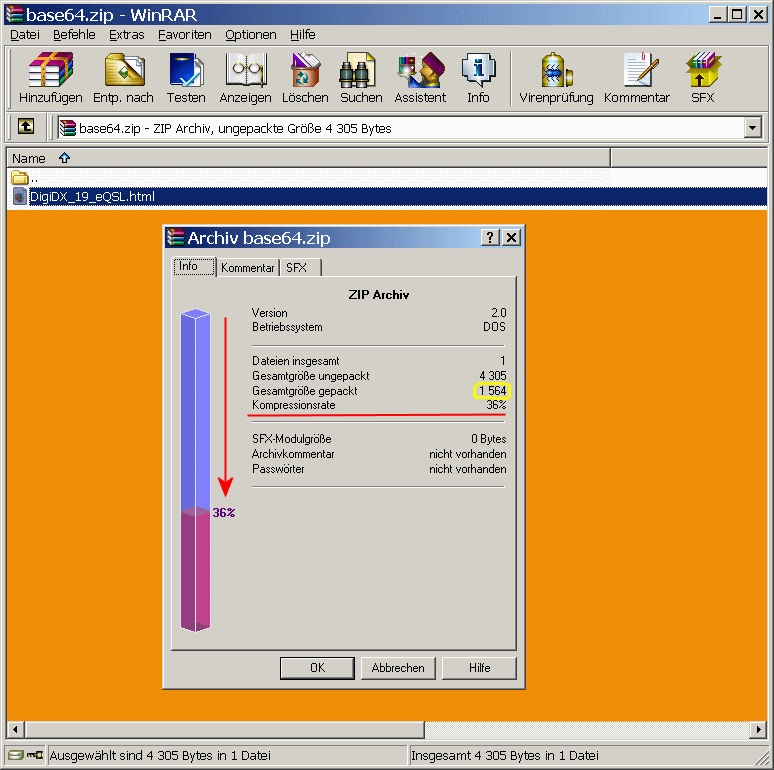 |
In case the above text did not decode correctly, you can combine lines from
several receptions in order to compile the correct text block, thanks to the
extra broadcasts twice a day by Channel 292.
Please send any reception reports, comments, radio reviews or suggested stories
to reports@digidx.uk
This is DigiDX signing-off...
Inlineframe:
DigiDX_19_eQSL.html size: 4 kb from
base64.zip size: 1,7 kb
██╗ ██╗██████╗ ██████╗ ██████╗ █████╗ ██████╗ ██╗ ██████╗ ██████╗ ██████╗ █████╗ ███╗ ███╗
██║ ██╔╝██╔══██╗██╔════╝ ██╔══██╗██╔══██╗██╔══██╗██║██╔═══██╗██╔════╝ ██╔══██╗██╔══██╗████╗ ████║
█████╔╝ ██████╔╝██║ ██████╔╝███████║██║ ██║██║██║ ██║██║ ███╗██████╔╝███████║██╔████╔██║
██╔═██╗ ██╔══██╗██║ ██╔══██╗██╔══██║██║ ██║██║██║ ██║██║ ██║██╔══██╗██╔══██║██║╚██╔╝██║
██║ ██╗██████╔╝╚██████╗ ██║ ██║██║ ██║██████╔╝██║╚██████╔╝╚██████╔╝██║ ██║██║ ██║██║ ╚═╝ ██║
╚═╝ ╚═╝╚═════╝ ╚═════╝ ╚═╝ ╚═╝╚═╝ ╚═╝╚═════╝ ╚═╝ ╚═════╝ ╚═════╝ ╚═╝ ╚═╝╚═╝ ╚═╝╚═╝ ╚═╝
|
http://www.kbcradio.eu/
RSID:
<<2016-07-
10T01:30Z
MFSK-32 @ 9925000+1500>>
Thomas Witherspoon provided a video of his reception of The
Mighty KBC while on vacation in Beaupré, Québec. Pictured are a
CC Skywave radio and La Vache Folle, a locally produced milk
stout ...
Sending Pic:144x109C;
██╗ ██╗ ██████╗ █████╗ ██████╗ █████╗ ██████╗ ██╗ ██████╗ ██████╗ ██████╗ █████╗ ███╗ ███╗
██║ ██║██╔═══██╗██╔══██╗ ██╔══██╗██╔══██╗██╔══██╗██║██╔═══██╗██╔════╝ ██╔══██╗██╔══██╗████╗ ████║
██║ ██║██║ ██║███████║ ██████╔╝███████║██║ ██║██║██║ ██║██║ ███╗██████╔╝███████║██╔████╔██║
╚██╗ ██╔╝██║ ██║██╔══██║ ██╔══██╗██╔══██║██║ ██║██║██║ ██║██║ ██║██╔══██╗██╔══██║██║╚██╔╝██║
╚████╔╝ ╚██████╔╝██║ ██║ ██║ ██║██║ ██║██████╔╝██║╚██████╔╝╚██████╔╝██║ ██║██║ ██║██║ ╚═╝ ██║
╚═══╝ ╚═════╝ ╚═╝ ╚═╝ ╚═╝ ╚═╝╚═╝ ╚═╝╚═════╝ ╚═╝ ╚═════╝ ╚═════╝ ╚═╝ ╚═╝╚═╝ ╚═╝╚═╝ ╚═╝
http://voaradiogram.net/
RSID: <<2016-07-0
9T16:01Z
MFSK-32 @ 17580000+1500>>
Welcome to program 171 of VOA Radiogram from the Voice of
America.
I'm Kim Andrew Elliott in Washington.
Here is the lineup for today's program, all in MFSK32 centered on
1500 Hz except where noted:
1:36 Program preview (now)
2:51 Saturn's moon Titan might
support life*
7:47 New Horizons space probe
extends its mission*
13:01 Lightning rod may have saved Maryland's State House*
18:42 Olivia 32-1000/2000 Hz: Pasta is good for you
26:29 MFSK32/1500 Hz: Closing announcements*
* with image
Please send reception reports to radiogram@voanews.com.
And visit voaradiogram.net.
Twitter: @VOARadiogram
Saturn's Moon, Titan, Could Support Life
VOA News
July 06, 2016
Titan, one of Saturn's moons, could support a very different kind
life, according to a new study.
Writing in the Proceedings of the National Academy of Sciences,
researchers from Cornell University say that despite the moon's
harsh environment, a "prebiotic chemical key" likely exists in
the form of hydrogen cyanide²t g ompound is produced when
sunlight interacts with the moon's "toxic" atmosphere made up of
nitrogen and methane.
The conclusion was reached based on data from NASA's Cassini and
Huygen's missions.
Hydrogen cyanide is an organic chemical capable of reacting with
other molecules, "forming long chains, or polymers, one of which
is called polyimine. Polyimine is flexible, which helps mobility
under very cold conditions, and it can absorb the sun's energy
and become a possible catalyst for life," researchers said.
"Polyimine can exist as different structures, and they may be
able to accomplish remarkable things at low temperatures,
especially under Titan's conditions," said Martin Rahm,
postdoctoral researcher in chemistry and lead author of the new
study. This paper is a starting point, as we are looking for
prebiotic chemistry in conditions other than Earth's. "We are
used to our own conditions here on Earth. Our scientific
experience is at room temperature and ambient conditions. Titan
is a completely different beast."
Other moons in the solar system have also been identified as
having conditions that could support life, including Saturn's
Enceladus and Jupiter's Europa.
While both Earth and Titan have flowing liquids in the form of
lakes, rivers and oceans, on Titan they are filled with liquid
methane and ethane, not water. Also, the moon is too cold to have
liquid water.
"We need to continue to examine this, to understand how the
chemistry evolves over time. We see this as a preparation for
further exploration," said Rahm.
"If future observations could show there is prebiotic chemistry
in a place like Titan, it would be a major breakthrough. This
paper is indicating that prerequisites for processes leading to a
different kind of life could exist on Titan, but this only the
first step," he added.
http://www.voanews.com/content/mht-saturns-moon-titan-could-support-life/3406796.html
Image: Mosaic of Titan from Cassini's February 2005 flyby.
Sending Pic:248x248;

This is VOA Radiogram from the Voice of America.
Please send reception reports to radiogram@voanews.com.
New Horizons Space Probe Gets Mission Extension
VOA News
July 05, 2016M
While all eyes are focused on the Juno space probe's historic
encounter with Jupiter, NASA has announced it is extending the
mission of the New Horizons spacecraft, which recently provided
dazzling photos and information on the dwarf planet Pluto.
New Horizons will be heading further into the the Kuiper Belt, a
region of the solar system that contains asteroids, comets and
other small bodies, to rendezvous with an "ancient object" called
2014 MU69, which the space agency calls "one of the early
building blocks of the solar system.
The probe is expected to arrive at 2014 MU69 on January 1, 2019.
"The New Horizons mission to Pluto exceeded our expectations, and
even today the data from the spacecraft continue to surprise,"
said NASA's Director of Planetary Science Jim Green. "We're
excited to continue onward into the dark depths of the outer
solar system to a science target that wasn't even discovered when
the spacecraft launched."
NASA also said it was keeping the Dawn spacecraft in orbit around
the dwarf planet Ceres rather than heading to the asteroid
Adeona.
"The long-term monitoring of Ceres, particularly as it gets
closer to perihelion, the part of its orbit with the shortest
distance to the sun, has the potential to provide more
significant science discoveries than a flyby of Adeona," said
Green.
New Horizons, the first probe to visit Pluto, was launched in
January of 2006, while Dawn was launched in September of 2007.
http://www.voanews.com/content/mht-new-horizons-space-probe-gets-mission-extension/3404587.html
Image: Artist's rendering of the New Horizons spacecraft ...
Sending Pic:233x186C;
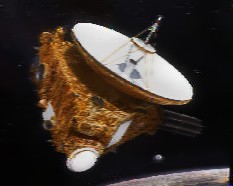
This is VOA Radiogram from the Voice of America.
Please send reception reports to radiogram@voanews.com.
Franklin-designed Lightning Rod Saves Historic Maryland Building
VOA News
July 02, 2016
The governor of the U.S. state of Maryland is crediting a
lightning rod designed more than 200 years ago by one of
America's most revered founding fathers, Benjamin Franklin, with
averting a fire at Maryland's historic State House.
The rod on the dome of the State House in Annapolis was hit by
lightning Friday evening, sending huge bolt of electricity
harmlessly to ground. Fire officials said that the jolt triggered
a sprinkler system installed in the dome of the 244-year-old
facility, but that there was no fire.
Governor Larry Hogan, at home in the nearby governor's mansion,
said he ran across the street to view the scene immediately after
the strike.
He later wrote on Facebook that the lightning rod was
"constructed and grounded to Franklin's exact specifications." He
also described the pointed lightning rod atop the building, which
served briefly in the 1780s as the nation's capitol, as a
"powerful symbol of the independence and ingenuity of our young
nation."
Franklin, who died in 1790 at age 84, has sometimes been referred
to as "the first American" for his early and strenuous
campaigning for colonial unity. The multitalented Franklin also
distinguished himself as a scientist, political theorist,
mathematician, inventor, diplomat, printer and author.
His research in the 1750s led him to design 2.4- to 3-meter-long
rods that soon protected many buildings and homes of the day from
lightning strikes.
His design for the Maryland State House led to what historians
describe as the largest lightning rod ever attached to a
colonial-era building: an 8.5-meter pointed rod that is thought
to have saved the day more than two centuries later.
http://www.voanews.com/content/franklin-designed-lightning-rod-saves-historic-maryland-building/3401691.html
Image: The lightning rod atop the Maryland State House ...
Sending Pic:194x198C;

VOA Radiogram now changes to Olivia 32-1000 centered on 2000 Hz.
The RSID will be followed by 10 seconds of silence in case a
manual mode change is required ...
RSID: <<2016-07-09T16:18Z
OL 32-1K @ 17580000+2000>>
This is VOA Radiogram in Olivia 32-1000
Pasta May Decrease Chances of Becoming Obese: Study
VOA News
July 05, 2016
Great news for pasta lovers. A study by researchers in Italy
suggests it doesn't make you fat and may even reduce the chances
of obesity.
Writing in the journal Nutrition and Diabetes, researchers say
the Mediterranean diet staple "contributes to a healthy body mass
index, lower waist circumference and better waist-hip ratio."
The findings from the Department of Epidemiology at the Institute
for Research, Hospitalization and Health Care Mediterranean
Neurologic Institute in Pozzilli, Italy were based on an analysis
of the diets of more than 23,000 people.
"In popular views, pasta is often considered not adequate when
you want to lose weight. And some people completely ban it from
their meals," said Licia Iacoviello, head of the Laboratory of
Molecular and Nutritional Epidemiology at the institute. "In
light of this research, we can say that this is not a correct
attitude."
Full text:
bit.ly/29LjdzQ
Returning to MFSK32 ...
RSID: <<2016-07-09T16:26Z
MFSK-32 @ 17580000+1500>>
This is VOA Radiogram in MFSK32
Please send reception reports to radiogram@voanews.com.
And visit voaradiogram.net.
Twitter: @VOARadiogram
Thanks to colleagues at the Edward R. Murrow shortwave
transmitting station in North Carolina.
I'm Kim Elliott. Please join us for the next VOA Radiogram.
This is VOA, the Voice of America.
Sending Pic:316x28C;

www.rhci-online.net/radiogram/radiogram.htm






